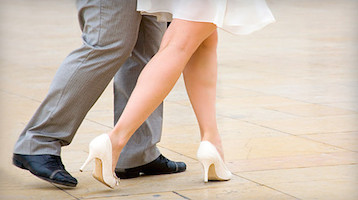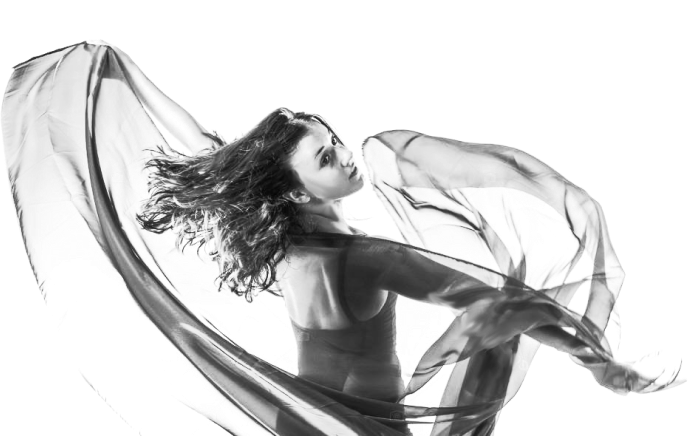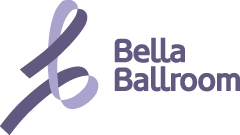
Ballroom Dancing
Quickstep
The Quickstep is an energetic ballroom dance that has recently gained more exposure from TV shows like, “Dancing With the Stars” and “So You Think You Can Dance.” It is characterized by quick, lively steps to very fast-paced music.
History of the Quickstep
There are two pivotal locations that contributed to the development of Quickstep dancing and it’s place in the United States today. Its origins go back as far as 19th century England, and the dance’s development soared in suburban New York in the 1920s.
The history developing out of England began in the 1850’s when the general public commemorated presidents, military exhibitions, regiments, and heroes with a march known as the Quickstep. This march merged with the One Step, the Peabody, the Black Bottom, the Charleston, and Foxtrot dances to create the Quickstep known today. This English’s Quickstep focused heavily on smooth steps of the Charleston with the movement and rhythm of the Foxtrot, although most dancers found the tempo of the Foxtrot to be too slow. When big bands started playing music at a faster tempo, dancers quickened the steps of the foxtrot and the Charleston. Bands began playing the popular Foxtrot style dances at a faster pace. They began to call the music and dancing the “Quick Foxtrot.” Because the Charleston also became a stylish dance during this time, it was often combined with this Quick Foxtrot. The dance styles mixed together very well, but their names did not. “Quick Time Foxtrot Charleston” was shortened to “Quickstep.” In 1927, the English couple Frank Ford and Molly Spain danced a version of the Quick Time Foxtrot and Charleston at the Star Championships without the characteristic Charleston knee actions and made the dance for two instead of a solo.
In the United States, it was suburban New York that put Quickstep on the map and allowed it to thrive and develop. Quickstep dancing was initially performed in the United States by African and Caribbean dance performers. It made its debut on the stage of American music halls and became immediately popular in ballrooms. Quickstep was heavily influenced by the jazz culture of the 1920s, and owes some of its movement to the equivalently popular Latin and Afro-Cuban dance crazes of the 1920s and 1930s. Quickstep’s rapid tempo and quick changes borrowed technique from the tango and the rumba, while walking steps were used to glide elegantly like it’s Foxtrot successor.
While the dance grew out of the foxtrot, the Quickstep today is quite separate. In Quickstep, the man often closes his feet and regularly uses syncopated steps. These movement characteristics could be found in early foxtrot dances, but is not the case with modern foxtrot today. Quickstep dancers skip, jump, run and kick while performing this entertaining dance.
Quickstep Dance Today
Today’s modern Quickstep is different than it’s earlier and original versions. The speed of the dance is around 200 beats per minute, is in 4/4 time, and is one of the five standard ballroom dances. Quickstep consists of a partner ballroom hold in closed position. It’s basic step is at a nearly running pace with hops, skips, points, flicks, crossing of the feet, kicks and more. Today, you can occasionally see traces of the Charleston, Black Bottom, and Peabody influences within the Quickstep dance movement. Many would agree that the Quickstep of today looks nothing like it’s original “Quick time Foxtrot and Charleston” namesake.
Contemporary competitive ballroom dancing comes in two major styles, American and International. International’s subcategory known as “standard” is the “smooth” category of dancing in the American ballroom system. What’s unique about Quickstep is that it is included competitively in international standard style, but is not considered a part of American smooth style. This is because international dancers often refer to Foxtrot as the “slow foxtrot”. This may lead one to think that the Quickstep is the “quick foxtrot”, but in actuality Quickstep is a dance of itself. Sometimes one may hear of the “American Quick Step,” but in the regulated ballroom community there is no such thing.
Quickstep dance is most popular as a competitive ballroom dance. It has become nationally celebrated on big television shows like “Dancing with the Stars” and “So You Think You Can Dance.” The popularity of these shows has given Quickstep dancing recognition in households nationwide. Often featured as a competitive dance instead of a social dance, choreography is a popular route for Quickstep dancing. The preparation of choreography can help dancers better execute the challenging intricacies of Quickstep movement. Quickstep dancing can be found socially at ballroom parties and dance studios.
The music generally used for the Quickstep is up-beat Big Band and swing music. Today, we find Quickstep dancers using contemporary pop hits to bring back this old time dance style. Whether dancing to modern artists like Arianna Grande and Adele, or old time musicians like Judy Garland and Ella Fitzgerald, the Quickstep remains upbeat and quick, as it’s name reveals. Quickstep dancing undoubtedly remains one of the most cheerful dances in the ballroom dance world.
Quickstep Music
- “Mr. Pinstripe Suit” Big Bad Voodoo Daddy
- “Steppin’ Out With My Baby” Joe Loss Orchestra
- “I’m Sitting on Top of the World” Bobby Darin
- “I Got Rhythm” Geoff Love Orchestra
- “Puttin’ on the Ritz” Judy Garland
- “Is You Is, or Is You Ain’t My Baby” Vic Damone
- “Charade” Bobby Darin
- “Mack the Knife” Bobby Darin
- “Down With Love’ Michael Buble and Holly Palmer
- “Suddenly I See” KT Tunstall
- “I Won’t Dance” Ella Fitzgerald and Louis Armstrong
- “Problem” Ariana Grande
- “Rolling in the Deep” Adele
- “Ain’t We Got Fun” Renne Olstead
- “Zoot Suit Riot” Cherry Poppin’ Daddies
- “As Long As I’m Singing” Bobby Darin
- “A Cool Cat in Town” Tape Five
- “Big Time” Linda Eder
- “Crazy Swing” DelaDap
- “Get Happy” Candye Kane
- “I’m So Excited” Pointer Sisters
- “Mr. Pinstripe Suit” Big Bad VooDoo Daddy
- “Witchcraft” Elvis Presley
- “Bandstand Boogie” Barry Manilow
- “Go Daddy-O” Big Bad VooDoo Daddy
- “American Beauty Rose” Frank Sinatra
- “Lady Is A Tramp” Glee Cast
- “You Can’t Go Wrong Doin’ Right” Steve Tropic & the Pinstripes
- “The Spider” Swingtime Orchestra
- “Dancin Fool” Barry Manilow
- “Foxtrott” The Muppets
- “As Long as I’m Singin” Brian Setzer Orchestra
- “The Boogie Bumper” Big Bad VooDoo Daddy
- “Tell Her About It” Billy Joel
- “Save all Your Kisses for Me” Dancelife
- “Jump With My Baby” Big Bad VooDoo Daddy
- “Whole Lotta Loving” Fats Domino
- “Love the one that’s Right for You” Michael Buble
- “Part-Time Lover” Stevie Wonder
- “Dance in The Ballroom” Hugo Strasser
- “The Song is You” Frank Sinatra
- “I Just Can’t Wait to Be King” Disney
- “Call The Law” Outkast Feat. Janelle Monae
- “No Mercy for Swine” Cherry Poppin’ Daddies
- “Fat Sam’s Grand Slam” Renee Gautier


